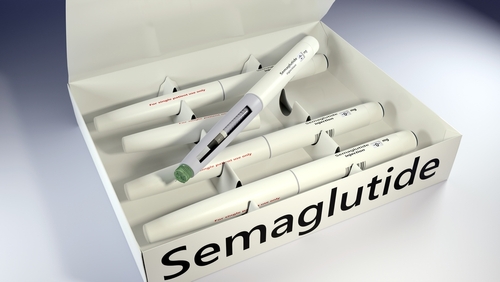
In the United States, diabetic kidney disease (DKD) and obesity-related nephropathy are leading causes of kidney failure, morbidity, and mortality. Medical treatments are only partially effective against DKD and obesity-related nephropathy. Bariatric surgery may confer renal protection in severely obese adolescents and adults, both with and without diabetes. Results of a recent study demonstrated that compared with bariatric surgery in severely obese youths with type 2 diabetes, there was an association between medical treatment and substantially higher odds of kidney disease over 5 years.
Petter Bjornstad, MD, and colleagues conducted an analysis to examine kidney outcomes of gastric bypass in a cohort of severely obese adolescents. The outcomes were compared with those in a cohort of adults who had been obese since adolescence. The researchers sought to test the hypothesis that there would be an association between gastric bypass surgery in severely obese adolescents and earlier and greater attenuation of markers of kidney disease compared with the same surgery performed in adults with longstanding obesity. Results were reported in Kidney International [2020;97:995-1005].
The analysis utilized data from the Teen-LABS (Teen Longitudinal Assessment of Bariatric Surgery) study that enrolled 242 adolescents. Of the 242 participants, 67% (n=161) underwent Roux-en-Y gastric bypass surgery and were included in the current analysis. In the LABS study (adult participants), 1738 participants underwent Roux-en-Y gastric bypass surgery. Of those, 396 reported history of obesity dating back to age 18 or earlier; the 396 adults were selected for comparison with the adolescents in the current analysis.
Fourteen percent of the adolescent cohort and 31% of the adult cohort had preoperative type 2 diabetes (P<.001). Further analyses were stratified by preoperative type 2 diabetes status.
In the cohorts with preoperative type 2 diabetes, distribution of sex, race, and ethnicity were similar between the adolescent and adult cohorts. Preoperative weight, body mass index (BMI), and hemoglobin A1c were also similar among adolescents and adults. Baseline levels of triglycerides and prevalence of hypertension were lower in adolescents compared with adults (121 mg/dL vs 157 mg/dL [P=.03] and 57% vs 80% [P=.006], respectively). Conversely, adolescents had higher baseline insulin concentrations (43.0 uU/mL vs 23.5 uU/mL; P=.002).
Among participants without preoperative diabetes, the distribution of sex, race, and ethnicity were similar between adolescent and adult populations. At baseline, BMI, weight, and insulin concentrations were higher in adolescents than in adults (53.5 kg/m2 vs 50.0 kg/m2, P<.001; 150.6 kg vs 143.9 kg, P=.03; and 25.2 uU/mL vs 19.0 uU/mL, P=.003, respectively). Adolescent participants had lower mean total cholesterol (157 mg/dL vs 182 mg/dL, P<.001), mean high-density lipoprotein cholesterol (37 mg/dL vs 43 mg/dL, P<.001), mean low-density lipoprotein cholesterol (92 mg/dL vs 112 mg/dL, P<.001), and prevalence of hypertension (31% vs 52%, P<.001).
In multivariable models, among adolescents with preoperative type 2 diabetes, there was an increased statistically significant prevalence of elevated urine albumin-to-creatinine ratio (UACR) at baseline compared with the adult cohort (22.5% vs 9.0%; P=.03). There were differences over time in the change in adjusted prevalence of elevated UACR in adolescents and adults with preoperative type diabetes. In the adolescent cohort, the adjusted prevalence of elevated UACR declined from baseline to year 1 (P=.06); the prevalence remained stable following year 1. Among adults, the adjusted prevalence of elevated UACR was stable from baseline to year 5 (P<.001).
In the cohorts without preoperative type 2 diabetes, the adjusted prevalence of elevated UACR at baseline was higher among adolescents compared with adults (9.4% vs 4.5%); the difference remained significant throughout the study (prevalence ratio, 2.04; 95% confidence interval [CI], 1.26-3.28; P=.004) in multivariable models.
In the cohorts with preoperative type 2 diabetes, hyperfiltration was more likely in the adolescent cohort than among the adults (prevalence ratio, 2.36; 95% CI, 1.03-5.33; P=.04) following multivariable adjustments. There was no change in the adjusted prevalence of hyperfiltration across the 5-year study period and the interaction term to test for a differential effect of bariatric surgery did not reach statistical significance.
Adjusted mean eGFR in the adolescent cohort was greater than that in the adult cohort over the 5-year period (mean difference, 7.4; 95% CI, –0.3 to 15.23 mL/min/1.73 m2, P=.06). The adjusted mean eGFR increased significantly from baseline to year 1 (P<.001) and remained constant thereafter. In the cohorts without preoperative type 2 diabetes, the prevalence of hyperfiltration was similar in adolescents and adults after multivariable adjustments.
Over a 5-year period, adjusted mean eGFR was significantly greater in adolescents than in adults (mean difference, 3.1; 95% CI, 0.05-6.1 mL/min/1.73 m2; P=.047). Over time, both groups experienced a significant change in eGFR (P<.001). The adjusted mean eGFR increased from baseline to year 1 (P<.001), year 1 to year 2 (P<.001), and then decreased from year 3 to year 4 (P=.002) and from year 4 to year 5 (P=.02). Baseline and 5-year eGFR were similar (P=.08). The adjusted trajectories of both groups during the study period were similar (P=.07).
Due to the small number of participants with preoperative eGFR <60 mL/min/1.73 m2, the impact of bariatric surgery on impaired eGFR could not be evaluated.
Study limitations cited by the authors included the observational design, the low prevalence of certain outcomes, and the small sample size of adolescents with type 2 diabetes. Other limitations were the lack of nonsurgical control groups and the possibility that there may have been residual biases in the adult cohort that were unaccounted for.
In conclusion, the researchers said, “We report an increased prevalence of early kidney disease in severely obese adolescents with type 2 diabetes compared with adults before bariatric surgery. This might be due to a higher prevalence of hyperinsulinemia in Teen-LABS participants with type 2 diabetes. Earlier remission of elevated UACR following gastric bypass was apparent in adolescents with type 2 diabetes compared with their adult counterparts. Kidney disease is associated with increased risk for cardiovascular events and early death in patients with type 2 diabetes. However, it remains unclear whether earlier remission of DKD will translate to better long-term cardiovascular and kidney health. Therefore, further research with extended follow-up is needed to refine the risks and benefits of bariatric surgery on long-term health outcomes in severely obese adolescents with and without type 2 diabetes.”
Takeaway Points
- Researchers conducted an analysis of data from the Longitudinal Assessment of Bariatric Surgery (LABS) study and the Teen-LABS study to examine the differences in health effects of gastric bypass surgery between adolescents and adults with and without type 2 diabetes.
- In the adolescent cohort with preoperative type 2 diabetes, the prevalence of elevated urine albumin-to-creatinine ratio (UACR) was significantly higher compared with the adult cohort with preoperative type 2 diabetes.
- Earlier remission of elevated UACR following gastric bypass surgery was seen in adolescents with type 2 compared with their adult counterparts.







 © 2025 Mashup Media, LLC, a Formedics Property. All Rights Reserved.
© 2025 Mashup Media, LLC, a Formedics Property. All Rights Reserved.